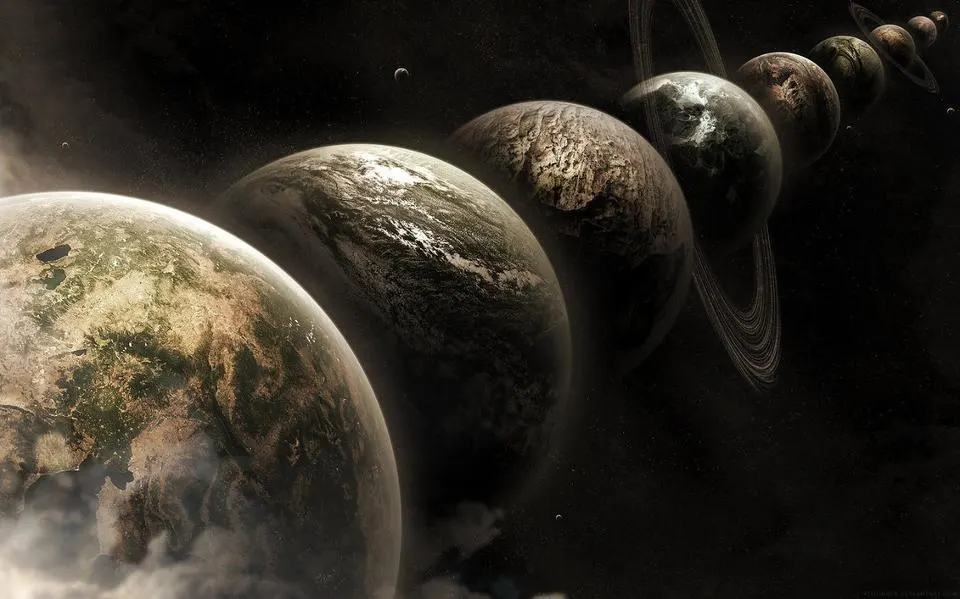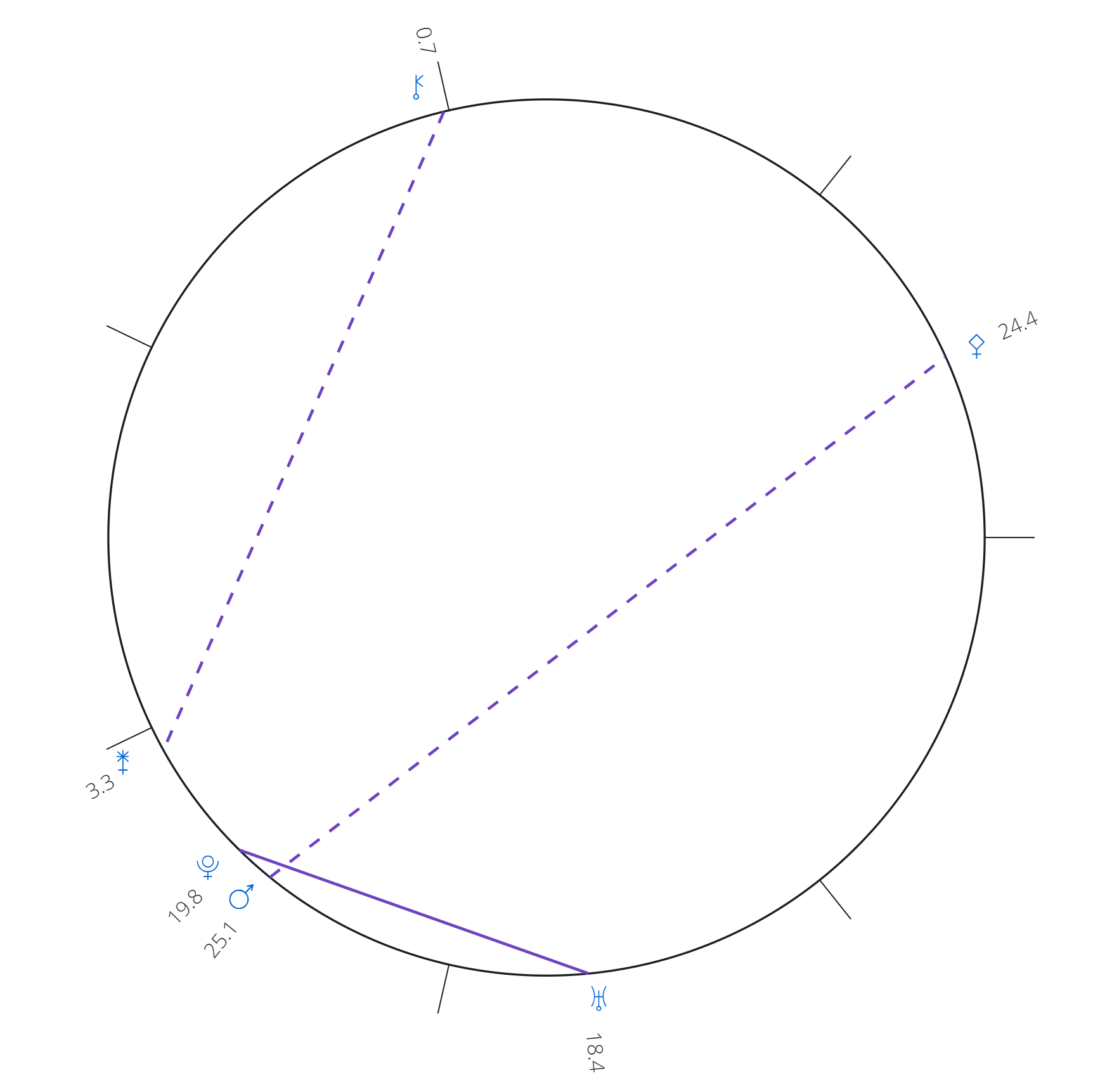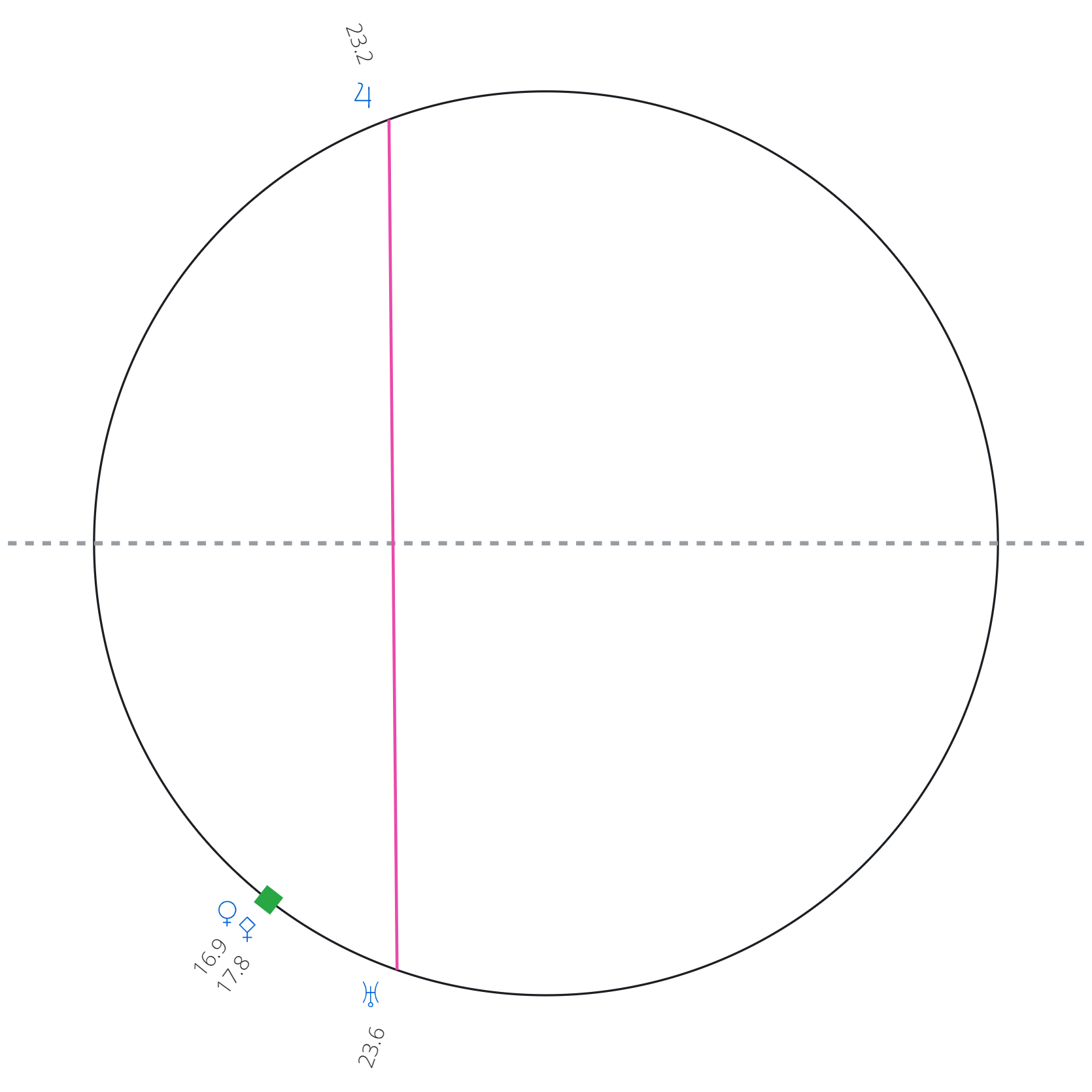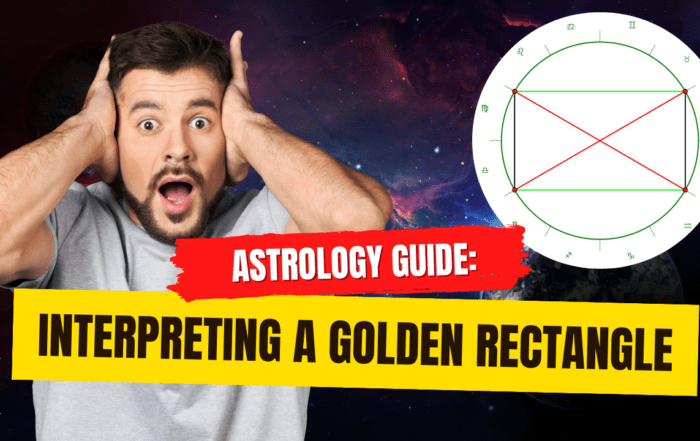Welcome back to the Duy Magi website!
The revolutionary Astrology form called Multiverse Astrology has captured everyone’s attention. By utilizing the 6 dimensions in the Geocentric and Heliocentric Universes, Multiverse Astrology provides interpretations and predictions with remarkable accuracy compared to other Astrology forms.
However, many are still unfamiliar and somewhat confused about the existence of the 6 dimensions in Multiverse Astrology. Therefore, in today’s blog, let’s explore the 6 dimensions in the Geocentric and Heliocentric Universes of Multiverse Astrology together.
If you don’t want to read, you can watch the video version here.
The Existence of Multiverse in Astrology
The concept of multiple universes existing simultaneously has piqued human curiosity for decades. Similarly, Multiverse Astrology studies and explores the power of astrology across multiple dimensions in various Astrological Universes. It goes beyond understanding life and destiny on a single-dimensional star map, opening up various aspects that bring diversity and richness to understanding human life and destiny.
The key to the precision of Astrology lies in exploring new dimensions of space. The fact is that the most exceptional astrologers, ahead of their time in human history, have used multi-dimensional space.
For example, Benjamin Franklin, the founding father of the United States, used 4 dimensions in the Heliocentric and Geocentric Astrological Universes to choose the date of the Declaration of Independence, which gave birth to the United States. Similarly, the date of the first Constitution of the United States was also his choice. History has proven that the United States is the most powerful nation in the world today.
Likewise, the legendary stock market investor William Delbert Gann also applied Astrology in multi-dimensional space in the Heliocentric and Geocentric Universes to predict stock market fluctuations and achieved enormous success.

Exploring 6 Dimensions in Astrology
Based on years of research, Multiverse Astrology has identified the existence of six important dimensions in two astrological universes, namely, the Geocentric Universe and the Heliocentric Universe.
The Geocentric Universe is formed by fixing the position of the Earth at the center and then establishing the coordinates of other planets. There are many spaces in the Geocentric Universe, but the most common spatial dimension is the Geocentric Zodiac 12, formed by dividing the circle into 12 equal parts.
This is the dimension that anyone studying Western Astrology uses. And usually, people stop here.
However, few people are familiar with the Heliocentric Universe in Astrology. The existence of the Heliocentric Universe is confirmed when astronomers discovered that the Sun is the center of the Solar System. In this universe, we determine the motion coordinates of the planets by taking the Sun as the reference point at the center.
Therefore, we have 2 Astrological Universes, the Geocentric and Heliocentric Universes.
To be fair, many have been aware of the existence of the Heliocentric Universe for a long time. And this is not new to those who seriously and systematically study astrology. However, most astrologers often choose to ignore the Heliocentric Universe because they do not know how to interpret it.
The reason for this is that the 12 Zodiac Astrology operates largely based on determining the coordinates of the Rising Sign and establishing the system of 12 Houses. However, in the Heliocentric Universe, the Rising Sign does not exist. This means that there is no system of 12 Houses here.
Moreover, the 12 Zodiac Astrology always analyzes the position of the planets in the 12 Zodiac Signs. For example, astrologers of the 12 Zodiac Signs are always interested in how a person born with Mercury in Aries differs from a person born with Mercury in Cancer.
However, when mapping the stars in the Heliocentric Universe, we often encounter cases where the positions of the planets here are in different Zodiac Signs compared to the star map in the Geocentric Universe.
For example, let’s consider the star map of a person born on January 1st 1990 at 12 noon in Vietnam. If in the Geocentric Chart, Mercury is in Capricorn, then in the Heliocentric Chart, Mercury is in Taurus. Similarly, in the Geocentric Chart, Venus is in Aquarius, but in the Heliocentric Chart, Venus jumps to Taurus. Similarly, Mars in Sagittarius in the Geocentric Chart jumps to Scorpio in the Heliocentric Chart.
Due to this significant difference, most Classical Astrologers are at a loss, not knowing how to interpret the Heliocentric Chart. And only a few ahead-of-their-time individuals like Benjamin Franklin and William Delbert Gann have explored how to use the Heliocentric Chart, and history shows that they have achieved remarkable success.
I will have a separate blog discussing the significance and differences between the Geocentric and Heliocentric Universes. For now, let’s get back to today’s main topic, the 6 dimensions of Space in Multiverse Astrology. And here are the first two dimensions of space.
Geocentric and Heliocentric Zodiac 12
These two dimensions are created by dividing a circle into 12 equal parts. From there, the position of each planet is determined as they move horizontally.
The difference between these two dimensions is straightforward. In the Geocentric dimension, we fix the Earth at the center. In contrast, in the Heliocentric dimension, we fix the Sun at the center. Therefore, the Geocentric star map will not have the Earth, and the Heliocentric star map will not have the Sun.
When dividing the 360-degree circle into 12 parts, each part will be 30 degrees. This forms the basis for the system of astrological aspects in these two dimensions. Specifically, there are 7 types of astrological aspects here:
- 0-degree is called Conjunction
- 30-degree is called Semisextile
- 60-degree is called Sextile
- 90-degree is called Square
- 120-degree is called Trine
- 150-degree is called Quincunx
- 180-degree is called Opposition
Here is an example of a natal chart in the Geocentric Zodiac 12 dimension for a person born on January 1st 1990 at 12 noon in Vietnam. Glancing briefly, we can see some of the following astrological aspects:

- Sun conjunct Neptune
- Mars semisextile Sun
- Juno sextile Saturn
- Pluto square Vesta
- Chiron trine Juno
- Venus quincunx Jupiter
- Jupiter in opposition Uranus
The aspect between planets always comes with a concept called Aspect Orb. Generally, the tighter the orb, the stronger the aspect. However, we will have a separate blog discussing this fascinating topic. For now, let’s move on to the next 2 dimensions of space.
Geocentric and Heliocentric Zodiac 7
Similarly, these two dimensions are created by dividing a circle into 7 equal parts. From there, the position of each planet is determined as they move vertically.
When dividing the 360-degree circle into 7 parts, each part will be approximately 51.43 degrees. This forms the basis for the system of astrological aspects in these two dimensions. Specifically, there are 3 types of astrological aspects here:

- 51.43-degree is called Septile
- 102.86-degree is called Biseptile
- 154.29-degree is called Triseptile
Here is an example of a natal chart in the Heliocentric Zodiac 7 dimension for a person born on January 1st 1990 at 12 noon in Vietnam. Glancing briefly, we can see some of the following astrological aspects:
- Uranus septile 51.43 degrees to Pluto
- Chiron biseptile 102.86 degrees to Juno
- Pallas triseptile 154.29 degrees to Mars
And now, let’s move on to the final 2 dimensions of space.
Geocentric Declination and Heliocentric Latitude
These are the most unfamiliar dimensions for most people. Before we delve into the details, let’s imagine opening a world map. To determine the coordinates of a city on the map, we need to know both the longitude (vertical coordinates) and latitude (horizontal coordinates) of that location.
Similarly, to determine the coordinates of a planet moving in the sky, we need to know both the coordinates in the horizontal and vertical directions of that celestial body. This is because the planets move both horizontally and vertically at the same time.
This is the premise for the Geocentric Declination and Heliocentric Latitude dimensions in Multiverse Astrology.
Astrology charts in these two vertical dimensions will always include the Northern and Southern hemispheres. They are divided in half by the 0-degree axis horizontally in the middle. And because these two dimensions observe the movement of planets in the North-South latitude, there will be only 2 types of astrological aspects:
- Parallel – formed when two planets move at the same latitude on the same Northern or Southern hemisphere
- Contra-Parallel in the Geocentric dimension and Contra-Latitude in the Heliocentric dimension – formed when two planets move on different hemispheres
Here is an example of a natal chart in the Geocentric Declination dimension for a person born on January 1st 1990 at 12 noon in Vietnam. Glancing briefly, we can see some of the following astrological aspects:

- Uranus forms a Contra-Parallel aspect with Jupiter
- Venus forms a Parallel aspect with Pallas
And these are the 6 dimensions used in Multiverse Astrology. These 6 dimensions play equally important roles in the interpretation process. This marks a significant advancement in Astrology, as the traditional 12 Zodiac Astrology only uses one dimension.
However, this has caused limitations in the accuracy of forecasting and interpreting in traditional astrology.
An experimental study called “A Double Blind Test of Astrology” published in the scientific journal Nature in 1985 affirmed this. 28 renowned astrologers were gathered to participate in predicting the personalities of volunteers. The results showed that traditional astrologers could only predict with about 30% accuracy.
One major reason for the low accuracy of the 12 Zodiac Astrology is the use of only one Geocentric Zodiac 12 dimension, neglecting the other 5 dimensions. This is equivalent to ignoring more than 80% of important information in astrology practice.
In conclusion,
Multiverse Astrology marks a significant advancement in the field of astrology by using 6 dimensions of space in the practice of interpretation on the Geocentric and Heliocentric Universes. The use of these multi-dimensional spaces is in line with the ideas of legendary astrologers like Benjamin Franklin and William Delbert Gann.
However, there is a crucial issue that we haven’t addressed in this blog, and that is the Aspect Orb. Therefore, in the next blog, we will delve deeper into this topic.
If you want to learn about Multiverse Astrology, please follow Duy Magi website. I will continue to create blogs teaching this miraculous astrology system.
If you are impatient to learn, you can sign up for my Multiverse Astrology Online Class at the link in the description below.
Plus, If you want to schedule an Astrology Consulting Session with me, please click the link in the description below.
Thank you very much, and see you in the next blogs.
Hourly Astrology Consulting Service
Auspicious Date Selection Service
Learn Multiverse Astrology




















